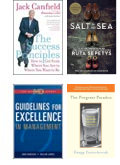Inclusion has become a popular buzzword in the recent push to end discrimination. A widespread panacea has been “training for everyone,” which can sometimes backfire. Problems arise when diversity training pits people against one other; company leaders choose not to participate; trainers use inappropriate initiatives that shame/blame and/or disrespect participants; talking heads do nothing but lecture and do not allow people to share their experiences, or training is presented as a once-a-year “check the box” compliance activity that wastes time and is quickly forgotten. One time “fix its” are ineffective because they are not systemic, and they ignore parts of the operation that promote exclusion. Do workers for example experience pay inequity, emphasis on diversity as dichotomous (e.g., male/female, white/person of color), or an inability to apply for and obtain promotions? In the article, “A Meta-Analytical Integration of Over 40 Years of Research on Diversity Training Evaluation,” Katerina Bezrukova, Chester Spell, Jamie Perry, and Karen Jehn sampled 260 diversity training studies (which included 29,407 participants), and found that one-and-done efforts are less effective. Their research revealed that diversity training packs a greater attitudinal punch when it’s part of a broader effort to overhaul culture.
If companies are truly committed to inclusion then every aspect of their operations should reflect that. Tom Chappell, ex-CEO of Tom’s of Maine, refers to his firm as an ecosystem—a collection of interdependent units that function in concert to achieve company objectives.
Getting people on board necessitates an all hands-on deck effort to create a sense of belonging and “we-ness.” Inclusive training queries employees on what they would like to see, and expands diversity to encompass a spectrum of difference—such as child/marital status, neural processing, personality (Type A/B, highly sensitive personality, introvert/extrovert, Asperger/neuro-typical), heritage, religion, ethnicity, job function, and family history. Multicultural companies affirm employees’ dignity via the elements that John Rice argued for in “The Difference Between First-Degree Racism and Third-Degree Racism.” These include “quantifiable goals, prioritized areas for investment, interim progress metrics, and clear accountability for execution.”
Managers are most times the ones responsible for attaining diversity-related goals, such as, “one-third composition of women and people of color in all supervisory positions in all plants,” as described in “Valuing diversity: A tale of two organizations.” Accountability reinforces the message that diversity counts. How many “lunch and learns” and community service experiences did employees attend and/or complete? Did they use their knowledge to mentor a colleague; join or start an affinity group; re-engineer a product so that it’s more inclusive and useful to a larger portion of the customer base; share their story in a company newsletter; or design their own initiative? Myriad small activities can snowball into a culture where every employee feels welcome.
Training should be accomplished through fun, non-threatening methods where people don’t cringe in the wake of accusation, blame, or discomfort. Multicultural dinners where employees explain the origin, cooking method, and history behind their food; calendars that present diverse ethnic and religious holidays; speakers from different countries; and newsletters that feature a different employee each month make education feel more like a partnership and a reflection of the people in it. In “Two Types of Diversity Training that Really Work,” authors Alex Lindsey, Eden King, Ashley Membre and Ho Kwan Cheung describe two types of training that produced positive results. One is perspective taking, where people are encouraged to write a narrative on what it’s like to walk in the shoes of someone else. A narrative might be, “What are the challenges for someone with a facial disfigurement?” Their research found that perspective taking created more positive attitudes not only toward the group in the exercise, but toward other groups as well. Setting diversity related goals, like helping marginalized people feel they are a part of the group, also showed promise.
Active learning ensures that everyone is a participant. In a Principles of Management Experiential Learning class students were tasked with changing the culture in a firm rife with bullying, discrimination, and harassment. Employee factions presented mobbing, hazing, emotional abuse, discrimination-inequity, stalking, micromanagement, and third-party harassment, and the potential fallout—psychological or physical illness, lawsuits, inability to attract the best employees, pay inequity, cliques, and favoritism, along with the change they would like to see—like compensation analysis, continuous training, democratic participation, and policy formation. The following excerpt describes the game:
X*YZ Company has been sued in the past year for workplace harassment. With the recognition that customers increasingly vote with their dollars by choosing firms that provide a positive work environment and treat their employees well, X*YZ has decided to explore a radical shift in how it conducts business. It realizes that top management must set the tone, create expectations for employee relations, and monitor their progress by soliciting employee perspectives. The company senses that its workers are angry. Their first step is to query how they feel (and what X*YZ should do) and then craft a cultural overhaul based on employee suggestions. Each member of the management team has agreed to tackle a different topic related to the proposed transformation. In this game, the class is divided into two factions: employees, who wish to see change in what they perceive as a toxic work culture, and management, who will act as change agents to engender greater respect and inclusion.
Student “managers” devised a plan to address “employee” complaints, and “employees” in turn evaluated their plan. In addition to the excitement that is absent in a canned speech, enactments can galvanize employees to action.
The importance of moving forward as a single unit to gain advantage provides a meta-goal that transcends divisions among employees. At a lunch and learn, employees from diverse backgrounds can be introduced, and their specific food cultures reinforced by catered meals from local restaurants that specialize in the respective cuisine. Firms can partner with organizations like the Association for Talent Development (ATD, formerly ASTD), local colleges, or community groups that may be willing to present on culture.
Impactful training can also occur offsite. Venues include a house of worship (e.g., temple, mosque, Gudwara), museum, international market, and ethnic restaurant. My International Human Resource Management class students spoke with travel agencies, foreign language departments, International Student Centers, foreign consulates, and family members who were expatriates. The repeated exposure, combined with listening to their peers present on foreign culture, shifted their attitudes so that they focused more on sociotypes, or valid information. Relatedly, the contact hypothesis suggests that familiarity breeds liking. The more we are surrounded with people different from ourselves, the more receptive we may be to learning from them.
Training can be unspoken. Do leaders walk the talk? Do they model respect, humility, empathy, curiosity, open mindedness, caring, compassion, a willingness to learn from other people, and a genuine interest in their employees? Do they sanction bad behavior when they see it, or conversely, do they give abusers a free pass? Have they communicated their conduct policy (or do they even have one?). The insidious learning that occurs from seeing a peer humiliated spreads like wildfire throughout the firm.
Managers show inclusiveness (or not) by how they deal with people who may not fit the dominant mode. Exxon provides one of the best examples. A female engineer at the Exxon Baytown plant remained quiet during project meetings because her culture required deep circumspection before she spoke. Instead of the company issuing a knee jerk response like: “YOU are the one who should be more direct, less sensitive, more assertive . . . a better more congruent version of other people, and an employee who behaves in a less ‘authentic’ manner,” it took the opposite tack of researching her culture and modifying practice, providing her adequate time to prepare. The leader’s mindset is crucial because it trickles down and permeates how business is conducted.
The “Workplace Transformation Part II: Creating a Culture of Inclusion” blog post illustrates that inclusionary efforts are successful to the extent that leaders are committed to continuous improvement:
Inclusive leaders can pivot their strategy. If they see a person not saying anything, they should ask themselves why. Are they holding back because they have nothing to say, or do they say nothing because they know that speaking exceeds the benefits? For people who have suffered mental/verbal/emotional abuse, obsessive compulsive disorder, bullying, or who were raised in a high-power distance culture where speech typically occurs upon invitation, a ready-fire-aim method of interaction [can be] off-putting. Piling into a fray is something they may feel reluctant to do.
In “The Case for an Inclusive Workplace: Beyond Rhetoric and Rote Policy” Jacqueline Hood and I explain that humble leadership is a prerequisite for inclusionary practice. Humble leaders nurture, groom, and mentor their subordinates, realize their personal role is to learn and improve, and encourage employees to be active contributors. Leaders who volunteer, visit nursing homes, engage in inner city planning, mentor in the community and at work, and extend an encouraging, helping hand to those who need it set the stage. Inclusive companies change to celebrate their employees rather than expecting them to modify themselves to placate the majority. In his article “Dominance and Submission in the Corporate Jungle,” Alan Goldman cites workplace inequities that entreat Janet Elliott’s Blue-Eyes/Brown-Eyes exercise. Noting the tendency to exert dominance, Goldman predicts that an Alpha Boss’ treatment of his or her employees creates a self-fulfilling prophecy. In his observations, “With regularity and repetition dominance and submission spreads and sets the agenda for behavior in the workplace. Left unchallenged this destructive leadership eventually metastasizes seeping deep into the firm’s culture.”
A company will fail to capitalize on differences if workers are afraid to express who they are. Similarly, uniqueness remains hidden unless employees feel safe enough to reveal it. As a vehicle to create authentic knowing, Tom’s of Maine employed the exercise “Ups/Down,” explained by Tom Chappell in The Soul of a Business. One by one, each participant rose and sat down in response to queries regarding their identity; e.g., “Everyone who is an only child, stand up.” A 2020 Emtrain study on workplace culture and health released on data collected after March 15 (a time when #BlackLivesMatter protests were in full swing), found that people were seven percent more likely to feel the need to hide their identity at work, and to code switch at their place of employment. They were also less likely to feel that norms of courtesy and respect pervaded their company.
Absent a public commitment or a personal epiphany (where the CEO decides that intentional diversity should be the corporate norm), a more deliberate means of transforming management and creating change may be necessary. At Denny’s, the answer to racism was a change in leadership which included the appointment of James B. Adamson as CEO of the firm’s parent company, Flagstar. In the article “Denny’s Changes Its Spots” Faye Rice and Anne Faircloth cited Adamson’s admonishment “Anyone who doesn’t like the direction this train is moving had better jump off now,” as a boldly stated mandated compliance policy. As a result of this cultural shift, Denny’s transcended its past to become a case study for transformation and diversity leadership.





Recent Comments